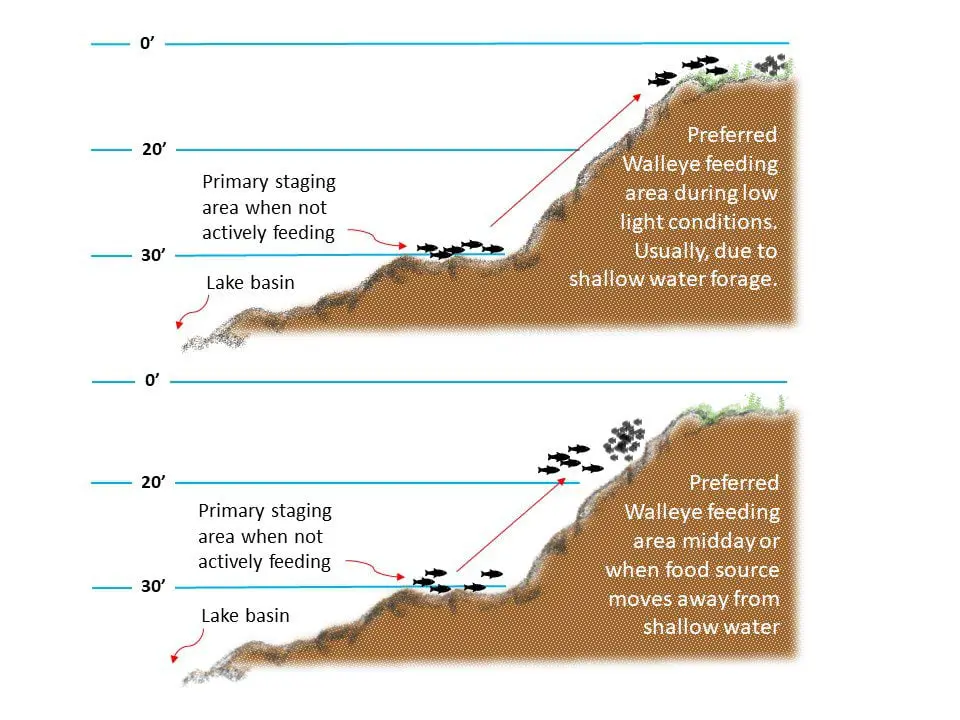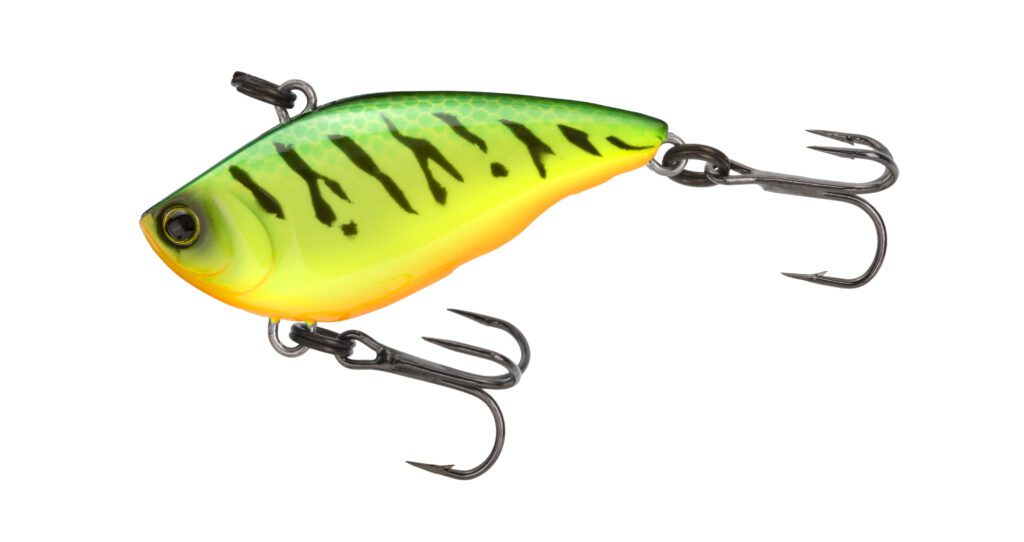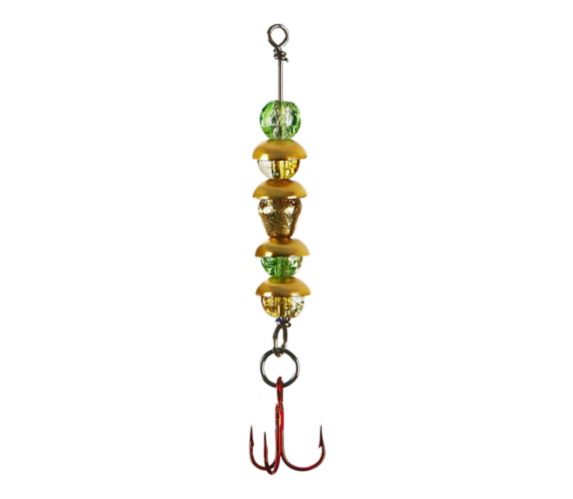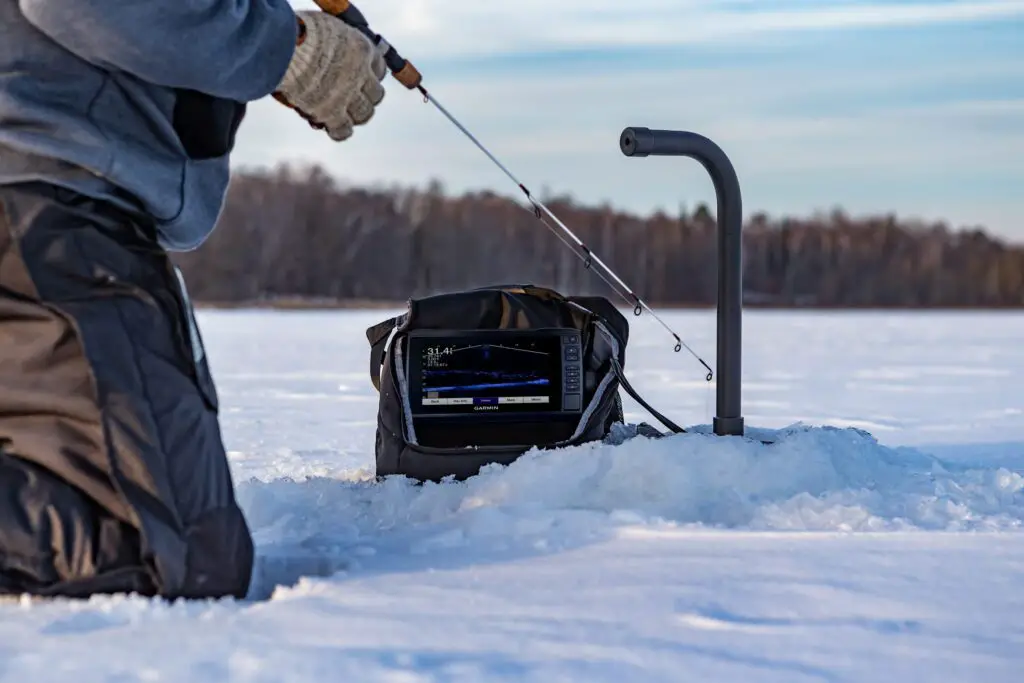Walleye fishing has always been a low-light game. Whether it be summer or winter, just about every good walleye story starts with a sunrise or a sunset and nearly every trophy shot of these fish is backdropped by an orange sky.
But although there is no denying that these fish are in their prime as the light gets low, we have seen enough big fish caught in the middle of the day to suggest that those limiting themselves to the dying hours of the day might be missing out.
For this reason, we decided to put together a few of the ways we stay on Walleye throughout the day, as well as the whys and wheres of winter walleye activity.
Where do walleye go in the winter?
Before we get into the how, it is always good to start with the where and why.
Walleye are on the move year-round, albeit at a much slower pace during the winter months. During this time, these fish are in-between stages as they slowly switch gears from feeding to spawning.
This transition kicks off in the fall, a time that many view as the peak of the season. During this time, fish start their journey towards their spawning grounds, whether it be a river, a stream, a shoal, or a gravel point. In some lakes, this journey can be remarkably long.
Take the eastern basin of Lake Ontario near Kingston, for example, some of these big-lake fish travel all the way to the Moira River in Belleville. That is a long movement that is done at a slow incremental pace.
 The long winter swim made by many Bay of Quinte Walleye
The long winter swim made by many Bay of Quinte Walleye
Once closer to their spawning grounds, often around November/December, Walleye tend to take a few months off before completing the final leg of their journey, arriving at the river (or spawning beds) right around ice-out.
When ice fishing for walleye in January and February, this is why this migratory phase is rarely felt by anglers as fish will return to the same location day after day as they await their call to spawn.
Where do walleye go during the day?
Winter may see Walleye rather slow and stagnant in terms of long daily migratory movements, but these fish are still constantly on the move. As with many species this time of year, these movements primarily revolve around forage, with Perch, Shiners, Suckers, and any other small baitfish influencing the majority of the fish’s decisions. An example of the two most common types of winter Walleye movement can be found below:

In a piece over at In-Fisherman, Gord Pyzer identified the other key factor that influences Walleye movement – light.
Gord points to studies conducted by Dr. Dick Ryder of the Ontario Ministry of Natural Resources and Dr. Dwight Burkhardt of the University of Minnesota where they showed just how sensitive these fish’s eyes are to light and how this influences their feeding habits.
Light is such an influence, in fact, that although light under the ice is just 10% of what it is during the open water season, changing light levels still inspire significant feeding activity, explaining why peak activity occurs during the early and late hours of the day.
But does this mean that Walleye cannot be caught during the day?
Far from it. And with a bit of strategy adjustment, anglers can stay on fish all day long.
How to Target Midday Walleye:
Get Moving

One of the keys to staying on Walleye throughout the day is to keep moving.
As we mentioned earlier in the article, Walleye move from shallow water to deep as they chase forage throughout the day. This means that if you stay put after a productive morning bite, you will have about an 8-hour wait before forage and fish move back into your area.
To keep busy during this window, follow the walleye as they head deeper into the basin. If the morning bite revolved around a 10′ deep section of ledge, try backing off into 18′ or 20′ for the afternoon once the bite slows down. In deeper lakes, sections down past that 25-foot mark will likely become necessary.
Since finding the right midday depth can take quite a bit of experimentation, be sure to use your technology to your advantage. If you have access to a fishfinder, focus your efforts on marking fish and forage before you drop a line.
If you have access to LiveScope, throw the unit on Forward View and search for schools of fish or bait before drilling too many holes. We have written extensively about how great these new units are and get into all the details about how to use them in the link below:
High-Tech Hardwater – How to Use LiveScope for Ice Fishing
Get Dirty

Another way to stay on fish during the day is to find dirty water.
As mentioned previously, changes in light are one of the driving factors in walleye feeding activity and are one of the main reasons why the bite tends to taper off by mid-morning. In stained water, however, light has a tougher time penetrating to the bottom and these changes are much less severe – often resulting in an extended morning bite.
Unfortunatley, finding stained water during the winter is no easy task as the water no longer receives any wind and sediment begins to settle. This makes early ice the best time to find dirty water as things have yet to truly settle down. This is also when weeds begin to die and decompose, making those thick weedlines you were fishing in the summer a great place to head for early ice.
Get Loud
Since midday Walleye aren’t actively feeding, anglers no longer have the luxury of subtlety and it is now up to you to initiate the feeding frenzy.
To do this, we like to swap out our jigging spoons for loud, flashy baits such as lipless crankbaits (AKA Rattlebaits), blade baits, and anything else that causes commotion in the water.
-

Yo-Zuri Rattl’N Vibe Mini™ -

Wally Talker -

Blade Bait
**TIP: when fishing lipless crankbaits through the ice, try replacing the back hook with a weighted treble. This will force the bait to sit horizontally and will prevent you from constantly hooking your own line.
If you’re fishing with a fishfinder, you will likely notice that fish will often come and explore the bait without taking. As frustrating as it is, this is part of the weeding-out process of midday fishing as you wade through non-feeding fish in search of those willing to eat.
To help catch the odd weary fish, try fishing a second rod with a small jig and live bait next to your reaction bait to pick up fish that are coming in to explore.
Get Ready

Our final tip for fishing midday Walleye is to stay ready when the feeding begins. Midday feeding frenzies are often brief so take advantage of them when they present themselves.
It is always a good idea to have a few rods on hand with various baits tied on to reduce the need to re-tie if something happens. Using a tip-up or a second rod is also a must when fishing on top of an aggressive school.
Lastly, make sure you pay close attention and take note of exactly how and when you got these fish to bite. Things like depth, bottom composition, bait used, and time of day will all be key to repeating this pattern next time you are out.
Conclusion
We hope that these tips will help you stay entertained between peak biting times and keep you on fish deeper into the day!
Stay tuned for part 2 this spring when we cover midday fishing during the open water season!

Great article
Who Knew !
Very useful info. Thx
Very useful info. Thx for the tips FNC